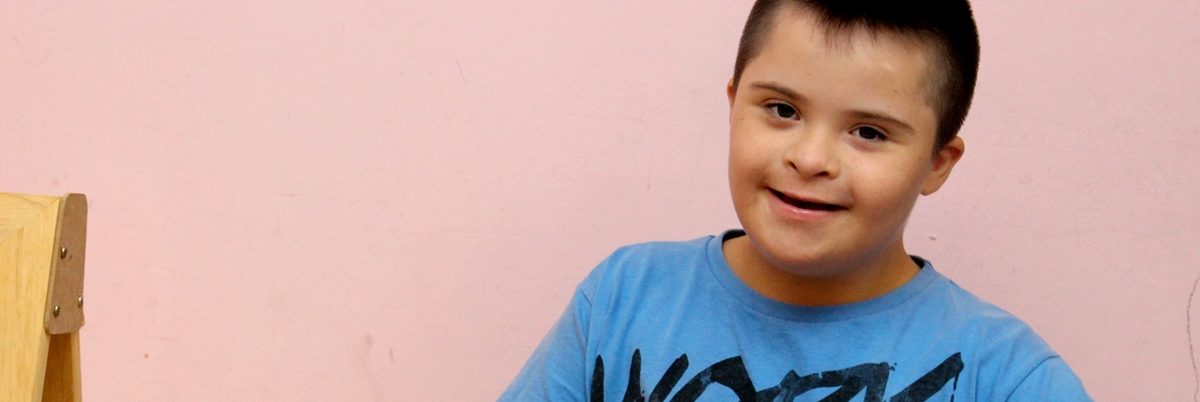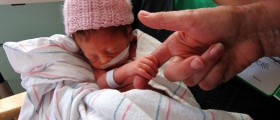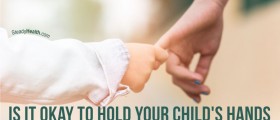Down syndrome or trisomy 21 is a chromosomal condition that results when the child is born with all or part of an extra 21st chromosome. The only way to prevent Down syndrome is to do a screening during the pregnancy and to identify the presence of the disease in the fetus.
This is a serious condition that may have severe effects. However, the exact manifestation of the disease varies greatly among people. Mostly, Down syndrome includes impairment of cognitive ability and physical growth, a particular set of facial characteristics, and a predisposition for certain physical health disorders such as congenital heart defects, gastroesophageal reflux disease, recurrent ear infections, obstructive sleep apnea, thyroid dysfunctions.

Children with Down syndrome develop at a slower rate than other kids. Here is a quick overview of some of the most important developmental milestones, which may be helpful to give the reader some idea about the expected rates of development for children with Down syndrome.
- Generally, it was assumed that infants and children with DS reached developmental milestones in the same linear fashion as their non-DS peers, but at later chronological ages. This view is too simplistic, as the age of acquiring milestones among infants and children with DS is reported to vary significantly. For example, the mean age at the onset of babbling is ~15 months, with an interindividual variability of 10 months.
- Similarly, sphincter control is acquired by DS children at an approximate age of 44 months, with 22 months of interindividual variability. Notably, Locatelli et al. suggested that the age at which developmental milestones are reached influences the subsequent development of diverse cognitive domains significantly.
- Intellectual disability, defined by an intelligence quotient (IQ) score of
- Regarding vocabulary acquisition and growth, longitudinal studies reported an existing continuum, ranging from non-verbal children to those with a vocabulary close to the normal range. Children with DS use gestures as a means of communication, which has been positively associated with the development of spoken vocabulary.
- Memory and learning deficits are universal characteristics of DS and are known to become more pronounced as development progresses. In classical DS research, the findings of affected memory domains are mixed, suggesting underlying variability.
- Children and adolescents with DS are known to be severely impaired in adaptive behavior, which subsumes behavioral skills that enable them to function independently in their everyday life.
- According to the available literature, the manifestation of psychiatric features, including autism, depression, and the attention-deficit/hyperactivity disorder, vary significantly, between 6 and >50%.
- D'Souza et al. demonstrated that parental depression, a disease linked to difficulties in responding to the child in a sensitive and consistent manner, explained deficits in expressive language development among children between 8 and 48 months of age with DS.
Gross motor skills
Children with Down syndrome will acquire their most important gross motor skills at the age of five months. This is when a child learns to balance the head and hold it steady and learns to roll from side to back. At six months, a child will learn to roll from stomach to back, to support the body on arms, and to reach one arm forward when lying on the stomach.
At seven months a child learns how to sit with support and learns hand-to-foot play. At eight months the child moves around their own axis while sitting on the floor and sits while supported by their own arms. The child learns to crawl at the 14th month and pulls to stand using furniture at the 15th month.
Only when it is 16 months old it walks with support and may not learn to walk alone before it is 23 months old. This means that children with Down syndrome have about 12 months of developmental delay in walking.
Personal social / self help
Children with Down syndrome will need some extra time to learn how to communicate with others and to acquire some elementary skills. For example, these children will have about 5 months of developmental delay before they learn how to feed themselves with biscuits. This usually happens in the 5th month but children with Down syndrome may not acquire this skill until they are 10 months old.
Kids with Down syndrome learn to control their bowels and urine during the day at the age of three. Normally, the child should acquire this skill at the age of two. It will take another year or two before a child with Down’s learns how to use the toilet or potty without assistance.
Communication
Children with Down syndrome will learn to babble their first words (such as da-da or ma-ma) in the 11th month of living. For typically developing children it takes no more than 8 months for a child to do so. However, these kids won’t articulate their first words before they are 18 months old.
It may take a couple of years before they learn how to use words spontaneously and how to communicate. On average, this developmental milestone is reached between the ages of 1.5 to 6 years.

















Your thoughts on this
Loading...